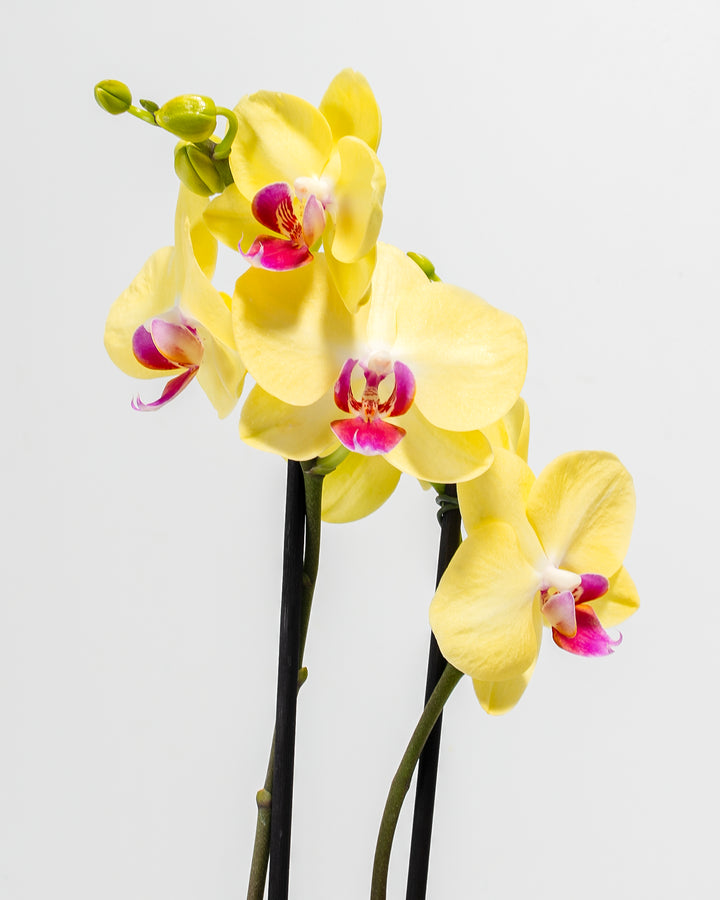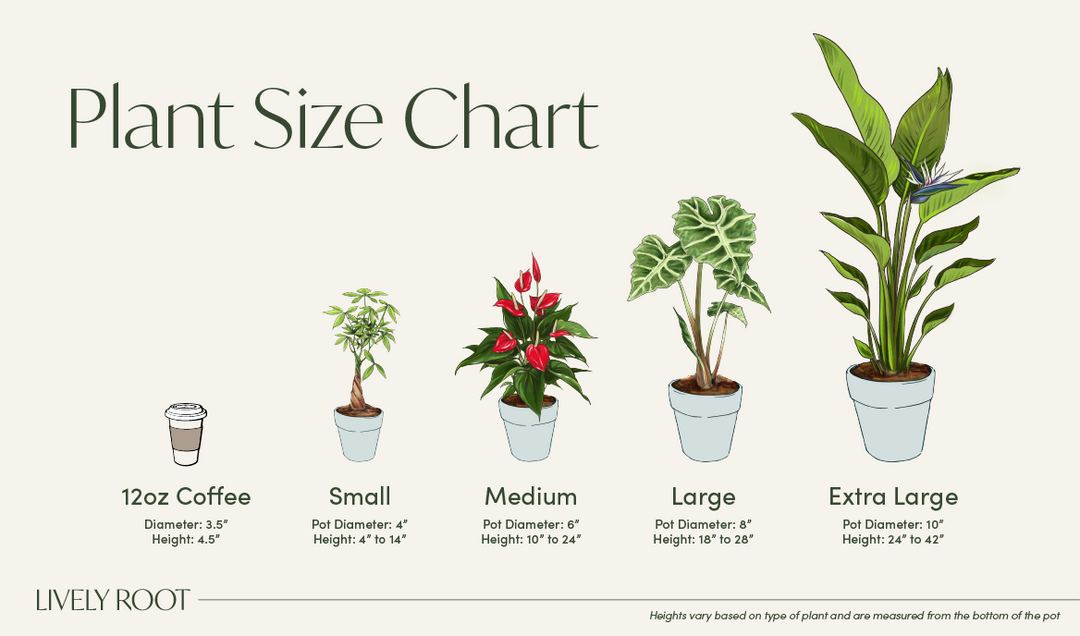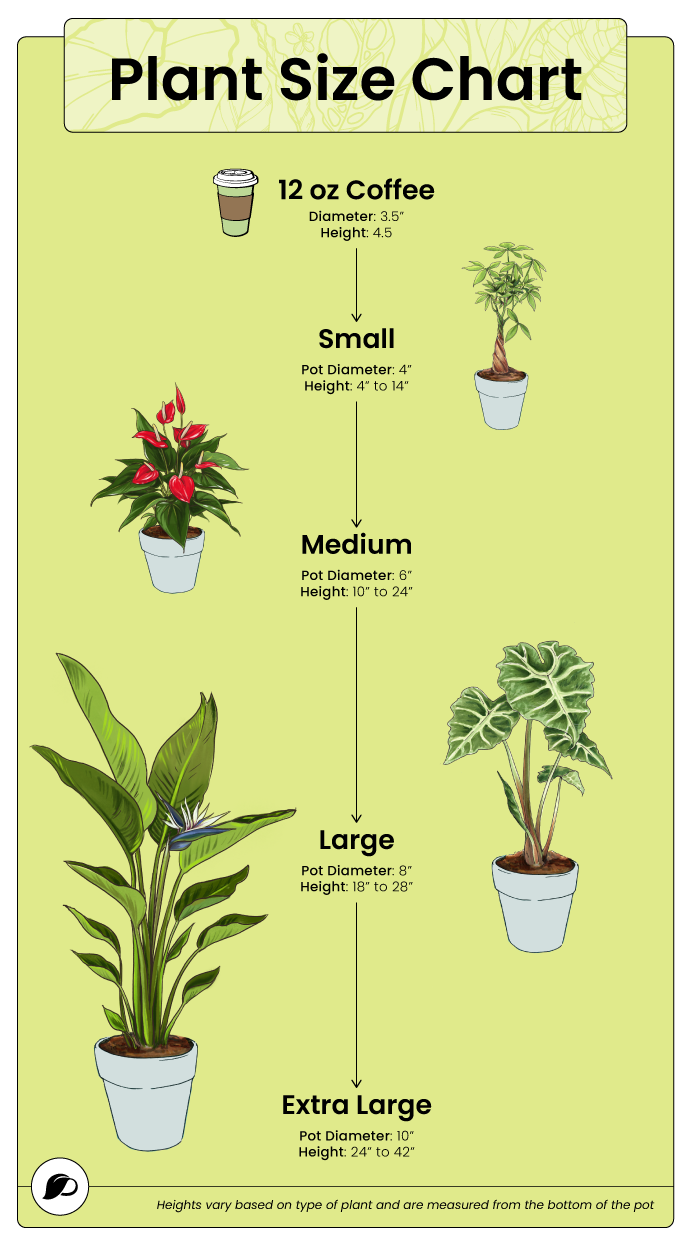Gift Card Balance
Enter the code below to redeem your gift card

The Yellow Phalaenopsis Orchid ‘Miraflore’ (Phalaenopsis spp.) is an elegant plant with glossy green leaves and slender spikes carrying sunny yellow flowers highlighted by a magenta violet center. This flowering plant is a moth orchid, which is one of the most popular orchids grown as houseplants. It belongs to the Orchidaceae family, numbering more than 25,000 species of orchids.
Native to Asia and Australia, this lovely tropical flower is best suited to USDA hardiness zones 10-12 and is most often grown as an indoor plant or a greenhouse plant. The Yellow Moth Orchid grows and blooms best in bright, indirect light, but should be protected from direct sun. Moth Orchid care is straightforward, even for beginners. The Yellow Orchid flowers last for two to three months, giving you plenty of time to enjoy their gorgeous blooms. Phalaenopsis orchids are also non-toxic and safe for pets.
This beautiful plant stands for joy, friendship, and new beginnings, which gives the Yellow Orchid a great symbolic meaning as a gift.
Orchids come in various stunning colors, including the white and pink Red Lip Moth Orchid, the majestic Purple Moth Orchid, and the snowy White Moth Orchid.
Moth orchids are easy to care for. Follow these simple Phalaenopsis Orchid care tips to help your plant thrive.
Water your orchid approximately once every 7-10 days. Hydrate the entire root system, letting excess water drain from the pot before replacing it in its decorative container. Let the soil dry before watering again.
Being tropical plants, Yellow Orchids require higher humidity, ideally from 50% to 70%. To increase indoor humidity, group your plants together, put a pebble tray under the pot, or use a humidifier.
Provide a place with bright, indirect sunlight for your Yellow Orchid. An east-facing window is best, ensuring that your orchid gets plenty of morning light but is protected from direct afternoon sun rays. Direct sunlight can scorch this plant’s leaves.
The best temperature for growing orchids is 60°F-85°F, with cooler temperatures at night and warmer temperatures during the day. Avoid placing your orchid in locations with sudden temperature fluctuations or drafts.
For the best Phalaenopsis care, plant your orchid in a well-draining orchid potting mix; add bark to enhance aeration around the roots. Repot your Moth Orchid ‘Miraflore’ approximately every 2 years (after blooming), adding new soil for orchids.
During the growing season, feed your plant with a balanced fertilizer for orchids. Fertilize only once a month during winter, when the orchid normally goes dormant. Always dilute the fertilizer by half.
The easiest way to propagate your Yellow Phalaenopsis Orchid is via orchid offshoots (called keiki). These offshoots occasionally form on the flower spikes of your orchid, resembling miniature orchid plants. Wait until the keiki develops roots and grows to approximately a third of the parent orchid’s size before separating it. Another method is to divide a mature plant with developed aerial roots.
One of the most common issues orchids suffer from is overwatering, which can lead to root rot if unchecked. Yellowing leaves are a sign that you’re overwatering your orchid.
If your plant isn’t flowering, try moving it to a location with brighter light. Cooler temperatures during the fall can also help the plant develop buds. If your Yellow Moth Orchid develops buds but sheds them before flowering, the reason is usually temperature fluctuations.
The Miraflore Orchid is an elegant plant that adds style and beauty to any living space. If you’ve already fallen in love with this low-maintenance, long-blooming plant, check out our Orchid Subscription for a regular supply of fresh blooms.
Choose flowering companion plants for your beautiful Phalaenopsis Miraflore orchid to enjoy magnificent flowers throughout the year:
Other amazing plants to enhance your living space’s style include:
Brighten your home’s interior with the sunny Yellow Phalaenopsis Orchid from Lively Root!
Follow us @livelyroot & show us your #livelyroot plants

